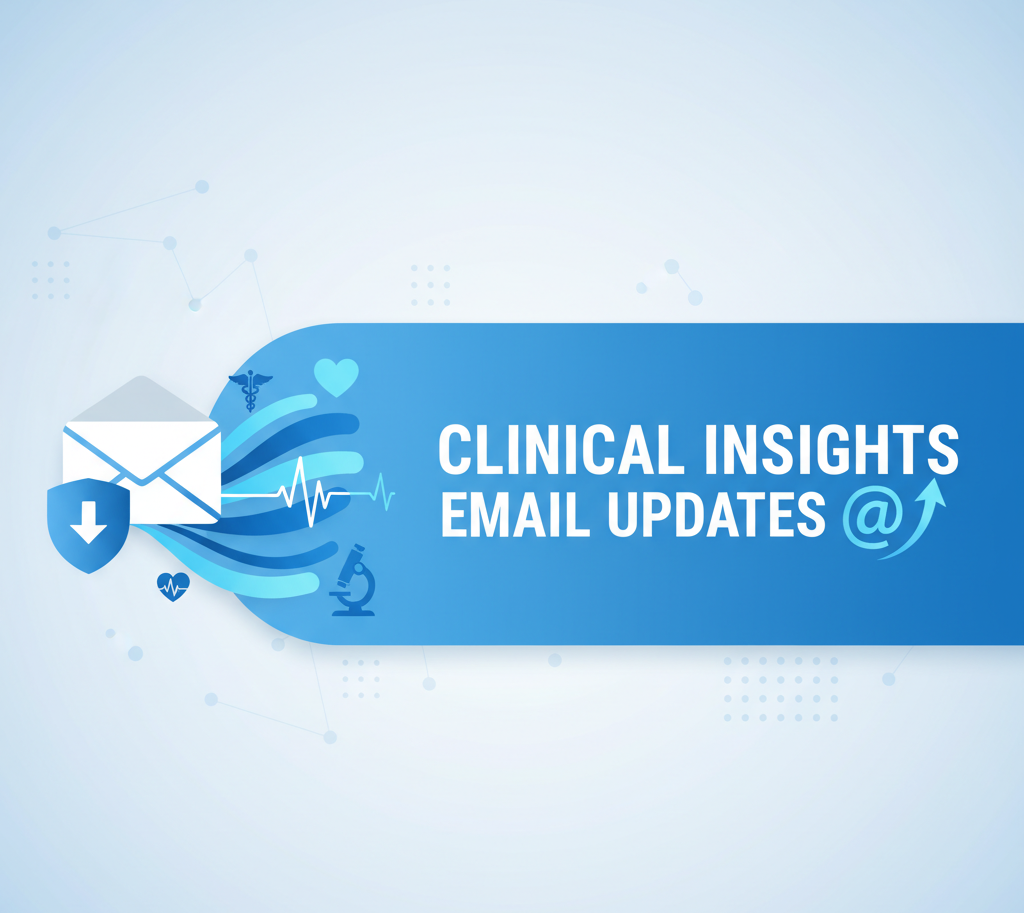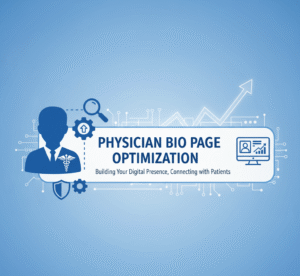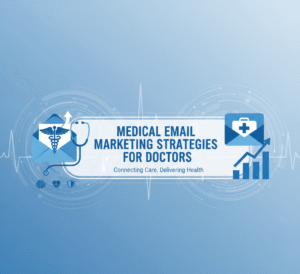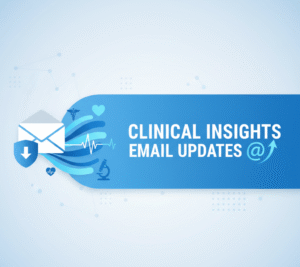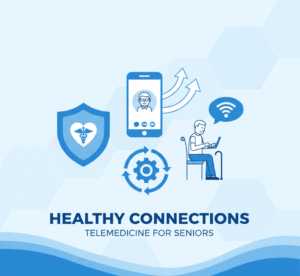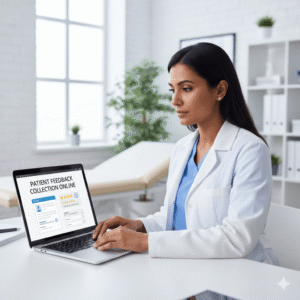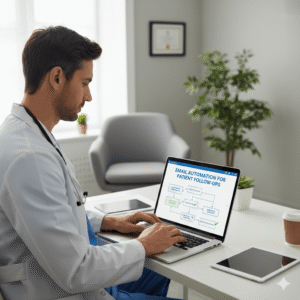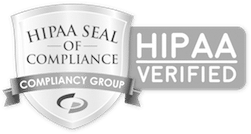“Transform your practice with Email newsletters for clinical updates that patients actually read; use personalized content, staff spotlights, and expert health tips to build trust and loyalty.”
Let’s be honest. Your patients’ inboxes are a battlefield. They are flooded every single day with retail promotions, social media notifications, and a dozen other newsletters they don’t remember signing up for. Most of this digital mail gets ignored, archived, or sent straight to the trash. The thought of adding your own practice’s newsletter to that chaotic mix can feel daunting, even pointless. You might wonder, “Will anyone even open it?”
The answer is a resounding yes, but only if you do it right.
A clinical newsletter is one of the most powerful, yet underused, tools at a medical practice’s disposal. It’s far more than just another piece of marketing. It is a direct line to your patients, a way to extend care beyond the four walls of the exam room. It’s an opportunity to build trust, improve health literacy, foster loyalty, and keep your practice at the forefront of their minds for all the right reasons.
The problem is that most medical newsletters are, frankly, boring. They are often sterile, self-serving announcements about office hours or a new insurance policy. They lack the one thing that makes a person pause their endless scrolling and actually click: value.
This article serves as your blueprint for crafting email newsletters that deliver clinical updates your patients will not only open but also look forward to receiving. We will move past the generic and dive into a concrete content strategy that provides genuine value. We will explore how to feature a “health tip of the month,” introduce new technology in a patient-centric manner, highlight a staff member to foster a personal connection, and share credible health news that your patients can trust. Furthermore, we’ll cover the essential design practices that make your emails readable and practical.
Your goal is to transform your newsletter from digital junk mail into an indispensable health resource. Let’s get started.
Why Your Practice Needs More Than Just Appointment Reminders
Before we dive into the “how,” let’s solidify the “why.” In today’s healthcare environment, patient relationships are everything. Automated appointment reminders are functional, but they do nothing to build a connection. A thoughtful newsletter, on the other hand, can fundamentally change how patients perceive your practice. It’s a key component of modern healthcare communication.
Building Patient Loyalty in a Competitive Landscape
Patients today have more choices than ever before. They can easily search for new providers online, read reviews, and switch to a different practice. What keeps them with you? It’s the relationship. A consistent newsletter keeps your practice present in their lives between visits. You’re not just the place they go when they’re sick; you’re a proactive partner in their health journey. This consistent, positive touchpoint is fundamental to building patient loyalty. When a patient feels connected to and cared for by their healthcare provider, they are far less likely to seek care elsewhere. The newsletter becomes a monthly reminder that you are invested in their well-being, not just their next co-pay.
Enhancing Patient Education and Health Literacy
Let’s face it: you’re competing with “Dr. Google,” and it’s a battle you need to win. Patients are constantly searching for health information online, and much of what they find is inaccurate, misleading, or downright dangerous. Your newsletter allows you to reclaim your role as their primary, trusted source of health information.
By providing clear, concise, and credible advice, you empower your patients to make better health decisions. You can debunk common myths, explain complex topics in simple terms, and guide them toward evidence-based practices. This not only improves their personal health but also makes your in-person appointments more efficient. An informed patient can ask better questions and have a more productive conversation about their care plan. This is the essence of effective patient engagement newsletters.
Promoting Services and New Technologies (Without the Hard Sell)
Did you just invest in a state-of-the-art diagnostic tool? Have you started offering telehealth appointments? A newsletter is the perfect platform for practice announcements via email. However, the key is to frame these announcements in terms of the patient’s benefit.
Instead of saying, “We now have a new XYZ machine,” you can say, “We’ve introduced a new, more comfortable way to get your screening done, with clearer results and faster appointments.” See the difference? The first is about you; the second is about them. A newsletter allows you to explain the “why” behind a new service, manage expectations, and generate genuine interest before the patient even steps into the office.
Improving Health Outcomes
Ultimately, this is the most important reason of all. A well-crafted newsletter can directly contribute to better patient health. A timely article about the importance of flu shots can increase vaccination rates. A feature on heart-healthy recipes could inspire people to make dietary changes. A “health tip of the month” about self-exams could lead to early detection of a serious condition. By providing preventative information and practical advice, you are actively participating in your patients’ long-term health, which is the cornerstone of quality medical care.
The Heart of Your Newsletter: Content That Connects and Informs
Now for the main event. What do you actually put in these emails to make them so valuable? The secret lies in a balanced diet of content that is both educational, personal, and useful. We refer to it as the Four Pillars strategy. A fabulous medical newsletter should include a mix of these elements in every single issue.
Pillar 1: The Health Tip of the Month
This is arguably the most valuable and shareable piece of content in your newsletter. It should be simple, actionable, and directly relevant to your patients’ lives. The goal is to give them one small thing they can do today to improve their health. The key to making this work is specificity and seasonality.
Why it works: It provides immediate, tangible value. It’s easy to digest and doesn’t require a considerable time commitment from the reader. It positions your practice as a source of practical, everyday health wisdom.
How to execute it:
- Keep it seasonal: Tie your tips to the time of year.
- Spring: “3 Simple Stretches to Avoid Gardening-Related Back Pain” or “Natural Ways to Manage Seasonal Allergies.”
- Summer: “How to Choose a Sunscreen That Actually Works” or “The Signs of Dehydration You Might Be Missing.”
- Fall: “Boosting Your Immunity Before Flu Season Hits” or “Healthy Twists on Your Favorite Comfort Foods.”
- Winter: “5 Ways to Beat the Winter Blues” or “How to Keep Your Skin Hydrated in Dry Weather.”
- Make it specialty-specific: Tailor the tip to your area of medicine.
- Cardiology Practice: “A 5-Minute Guide to Reading a Nutrition Label for Sodium” or “One Simple Swap to Lower Your Cholesterol This Week.”
- Dermatology Clinic: “The Right Way to Do a Monthly Skin Check” or “Are You Washing Your Face Wrong? A Quick Guide.”
- Pediatrics Office: “How to Create a ‘Screen-Free’ Bedtime Routine for Better Sleep” or “Packing a Lunchbox That Your Kids Will Actually Eat.”
- Orthopedics Group: “The Best Desk Chair Stretches to Prevent Neck Pain” or “Choosing the Right Running Shoe for Your Foot Type.”
The format should be straightforward to scan. Use a clear heading, accompanied by a supporting image or a one-minute video, and include a few bullet points. That’s it. You’ve just provided immense value with minimal effort for the reader.
Pillar 2: Introducing New Services & Technology
When your practice evolves, your patients should be the first to know. Whether it’s a new piece of equipment, a new treatment option, or a new online portal, your newsletter is the place to share the news. However, remember the golden rule: frame it in terms of the patient’s benefit.
Why it works: It demonstrates that your practice is modern, growing, and committed to delivering the best possible care. It also serves as a subtle but effective way to market higher-value services without being overtly commercial.
How to execute it:
Avoid technical jargon. Your patients don’t care about the model number of your new laser; they care about what it can do for them. Focus on outcomes.
- Focus on Benefits: Instead of “We acquired a 3D mammography system,” try “Introducing a Clearer, More Accurate Mammogram. Our new 3D technology helps us detect potential issues earlier and reduces the need for follow-up appointments, giving you peace of mind faster.”
- Use a Q&A Format: Anticipate your patients’ questions and answer them directly. For example, when introducing telehealth services:
- Headline: Your Doctor’s Visit, From the Comfort of Your Home.
- Q: What is a telehealth visit?
- A: It’s a secure video appointment with your doctor using your smartphone or computer…
- Q: Does my insurance cover it?
- A: In most cases, yes! We can verify your coverage before your appointment…
- Q: What conditions are suitable for telehealth?
- A: It’s perfect for follow-ups, medication management, reviewing lab results, and addressing many common concerns…
- Show, Don’t Just Tell: Include a high-quality photo of the new equipment or a short video of a staff member explaining the new service. Seeing is believing.
Pillar 3: The Staff Spotlight
Healthcare is deeply personal. Patients form bonds with the nurses, medical assistants, front desk staff, and physicians who care for them. Humanizing your practice is one of the most effective ways to build trust and reduce patient anxiety. The staff spotlight is a fantastic tool for this.
Why it works: It puts a friendly face to the names your patients see and interact with. It fosters a sense of community and demonstrates that your team is comprised of caring, relatable individuals. This personal connection is a powerful driver of patient loyalty.
How to execute it:
Each month, feature one member of your team—it doesn’t have to be a doctor! Highlighting a nurse, physician assistant, or even a long-serving receptionist can be incredibly effective.
- Get a Great Photo: Use a professional, warm, and friendly headshot—no blurry smartphone pictures.
- Ask Fun, Relatable Questions: Go beyond their job title and credentials to learn more about them. Mix professional questions with personal ones.
- “What’s the most rewarding part of your job?”
- “Why did you choose a healthcare career?”
- “What’s one piece of health advice you follow yourself?”
- “Outside of work, what do you do to de-stress?”
- “What’s your favorite healthy (or not-so-healthy!) recipe to cook?”
- “Do you have any hidden talents?”
Present it as a short, engaging interview. This section often becomes the most-read part of the newsletter because people are naturally curious about other people. It transforms your practice from a clinical entity into a team of individuals they know and trust.
Pillar 4: Curated, Credible Health News
Your patients are drowning in health information, and they need a trusted filter. Your newsletter can be that filter. By curating important health news, you save them time and help them separate fact from fiction.
Why it works: It reinforces your practice’s authority and expertise. It demonstrates that you are staying up-to-date with the latest research and developments in medicine. It provides a valuable service to patients who are overwhelmed by conflicting health information.
How to execute it:
This is not about simply dropping a link to a news article. Your value is in the curation and context.
- Select Reputable Sources: Only share information from credible sources like the Centers for Disease Control and Prevention (CDC), the National Institutes of Health (NIH), major peer-reviewed medical journals (like JAMA or The New England Journal of Medicine), and reputable medical associations.
- Summarize the Takeaway: Never assume your patients will click the link. Your job is to tell them why it matters. Write one or two sentences that summarize the key finding.
- Bad Example: “New Study on Coffee and Heart Health: [link]”
- Good Example: “Good news for coffee lovers! A recent large-scale study in the Journal of the American Heart Association found that drinking 2-3 cups of coffee per day was associated with a lower risk of heart disease. You can read the full details here: [link]”
- Add Your Perspective: This is the most crucial step. Briefly explain what this news means for them as your patient.
- Example: “While this is promising research, it’s important to remember that moderation is key. If you have high blood pressure or are sensitive to caffeine, please discuss your coffee intake with us at your next visit.”
By adding your summary and perspective, you transform a generic news item into personalized, expert advice.
From Cluttered to Compelling: Design That Drives Engagement
You could have the best content in the world, but if your email is a wall of text that looks terrible on a phone, no one will read it. Intelligent design is not about being fancy; it’s about being effective. When it comes to email design for doctors, clarity and readability are paramount.
Subject Lines That Beg to Be Opened
The subject line is your email’s first impression. It’s the single most crucial factor in whether your email gets opened or ignored. Your goal is to be intriguing without being clickbait.
- Be Specific: Instead of “Practice Newsletter,” try “Your October Health Update from [Practice Name].”
- Highlight Value: Lead with the most interesting piece of content. “A 5-Minute Trick for Better Sleep” or “Is Your Sunscreen Actually Working? Find Out Inside.”
- Use Numbers: “3 Ways to Boost Your Immunity This Fall.”
- Ask a Question: “Are You Making This Common Mistake at the Gym?”
Track your open rates. Over time, you’ll learn which kinds of subject lines resonate most with your patients and can refine your approach accordingly. This is a key strategy to improve email open rates.
The Power of Scannability
People do not read emails; they scan them. Your design must cater to this reality. The goal is to make your key messages stand out.
- Short Paragraphs: Keep paragraphs to a maximum of 2-3 sentences.
- Bold Headings: Use clear, descriptive headings for each section (e.g., “This Month’s Health Tip,” “Meet Our Nurse, Sarah”).
- Bulleted Lists: Use bullet points to break up text and make information easy to digest.
- White Space: Don’t cram everything together. Ample white space around text and images makes the entire email feel more calming and easier to read.
Mobile-First, Always
Over 60% of emails are now opened on a mobile device. If your newsletter is not optimized for small screens, you are alienating the majority of your readers.
- Single-Column Layout: This is the gold standard for mobile-friendly design. It ensures that content stacks vertically and is easy to scroll through with a thumb.
- Large Fonts: Use a clear, legible font (like Arial, Helvetica, or Georgia) at a size of at least 16px for body text.
- Tap-Friendly Buttons: Any links or buttons (your “Call-to-Action”) should be large and easy to tap with a finger, with plenty of space around them.
- Test Before Sending: Always send a test email to yourself and check it on your own smartphone to ensure it looks and functions perfectly.
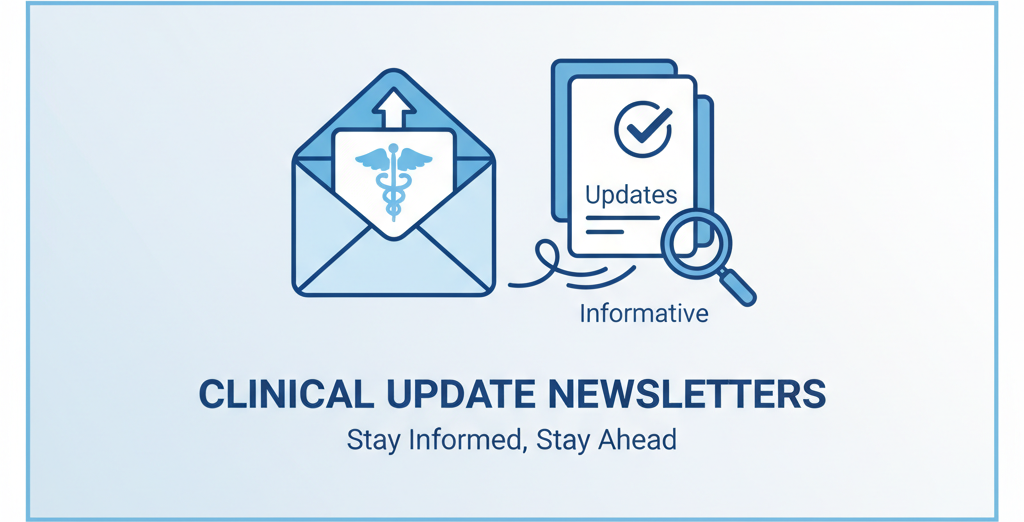
Staying Compliant: Navigating HIPAA in Your Email Strategy
The topic of HIPAA-compliant email marketing can make practice managers nervous, and for good reason. Protecting patient privacy is non-negotiable. However, sending a general health newsletter is typically straightforward and falls under marketing communications, but you must follow explicit rules.
The Golden Rules of Compliant Emailing:
- Never Include Protected Health Information (PHI): This is the most important rule. Your newsletter should never contain any patient-specific information—no names, no test results, no appointment details, no diagnoses. The content should be general and educational, applicable to your entire patient list.
- Get Explicit Consent (Opt-In): You must have a patient’s permission to send them marketing emails. The best way to do this is through an opt-in process. You can include a checkbox on your patient intake forms (separate from the consent for treatment), have a sign-up sheet at the front desk, or place a simple sign-up form on your website.
- Provide an Easy Opt-Out: Every newsletter you send must contain a clear and easy-to-find “Unsubscribe” link, typically located in the footer. This is required by law (CAN-SPAM Act) and is crucial for building trust. If a patient wants to stop receiving emails, it should be easy for them to do so.
- Use a Reputable Email Service Provider (ESP): Do not send your newsletter from your office Outlook or Gmail account. Use a dedicated service like Mailchimp, Constant Contact, or Campaign Monitor. These platforms are designed for mass emailing. They manage your subscriber lists, automatically handle unsubscribes, provide crucial analytics (such as open rates), and help ensure your emails are actually delivered instead of ending up in spam folders.
When in doubt, consult with a healthcare compliance expert or seek the advice of legal counsel. However, for a general information newsletter, following these rules puts you on safe ground.
Putting It All Together: Your Partner in Patient Communication
We’ve covered a lot of ground: the strategy behind valuable content, the pillars of an engaging newsletter, the principles of effective design, and the guardrails of compliance. It’s a comprehensive blueprint, but we also know it’s a lot of work.
Creating high-quality content, designing a beautiful template, managing subscriber lists, and analyzing results takes time and expertise—time that you and your staff need to dedicate to patient care. This is where InvigoMedia comes in.
We specialize in healthcare email marketing for medical practices just like yours. We don’t just build email campaigns; we build patient relationships. Our team of writers, designers, and strategists understands the unique challenges and opportunities in the healthcare space.
We help practices like yours develop and execute email newsletters for clinical updates that get results. We’ll work with you to create a content strategy that reflects your practice’s unique voice and expertise. We handle everything from writing the “Health Tip of the Month” and crafting compelling staff spotlights to designing mobile-friendly templates and ensuring every email is compliant. Our goal is to help you build lasting patient loyalty, effectively promote your services, and keep your practice top-of-mind as a trusted health partner in your community.
You focus on what you do best: providing exceptional patient care. Let us handle the communication that supports it.
Ready to turn your newsletter into a powerful tool for patient engagement? Contact InvigoMedia today for a complimentary consultation. Let’s discuss how we can help your practice connect and thrive.
Frequently Asked Questions About Clinical Newsletters
1. How often should we send a newsletter?
For most practices, a monthly newsletter is the perfect cadence. It’s frequent enough to stay on your patients’ radar but not so frequent that it becomes annoying. Consistency is more important than frequency. A well-crafted monthly newsletter is far superior to a rushed, mediocre weekly one.
2. What is a reasonable open rate for a medical newsletter?
The industry average for the health and wellness sector hovers around 20-22%. However, this can vary widely. A practice with a highly engaged patient list that has explicitly opted in can often see open rates of 30%, 40%, or even higher. The key is providing consistent value, which trains your audience to open your emails.
3. Can’t I just use my office email account (like Outlook or Gmail) to send these?
You should not. There are several critical reasons for this. First, sending bulk email from a standard account is a quick way to get your email address flagged as spam, meaning none of your emails (including critical one-on-one communications) will get through. Second, these accounts don’t have the necessary features to manage unsubscribes automatically, which is a legal requirement. Third, you get zero analytics. An Email Service Provider (ESP) is essential for professional and effective healthcare email marketing.
4. What’s the biggest mistake practices make with their newsletters?
The most common mistake is making the newsletter all about the practice. A newsletter that only contains practice announcements, promotions, and requests to “schedule now” will fail. The focus must be on the patient. The rule of thumb is 80% value, 20% promotion. Lead with educational, helpful, and engaging content. The promotional aspect will be far more effective when it’s part of a newsletter that patients already value.
5. How do we get more patients to sign up for our newsletter?
Make it part of your workflow. The best method is to ask at the point of care.
- At Check-in: Have your front desk staff ask patients if they’d like to join the mailing list for monthly health tips and practice news.
- On Intake Forms: Add a clear, separate checkbox for email newsletter sign-ups on your digital or paper intake forms.
- On Your Website: Have a prominent sign-up form on your homepage.
- In Your Email Signature: Add a simple link to your sign-up page in the email signatures of your office staff.

